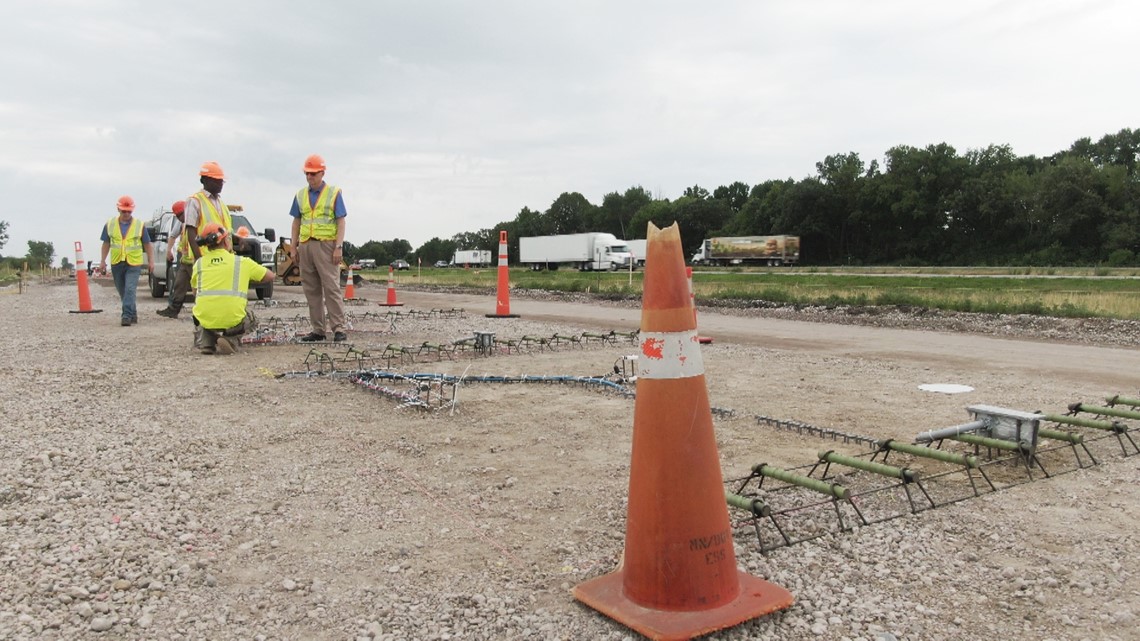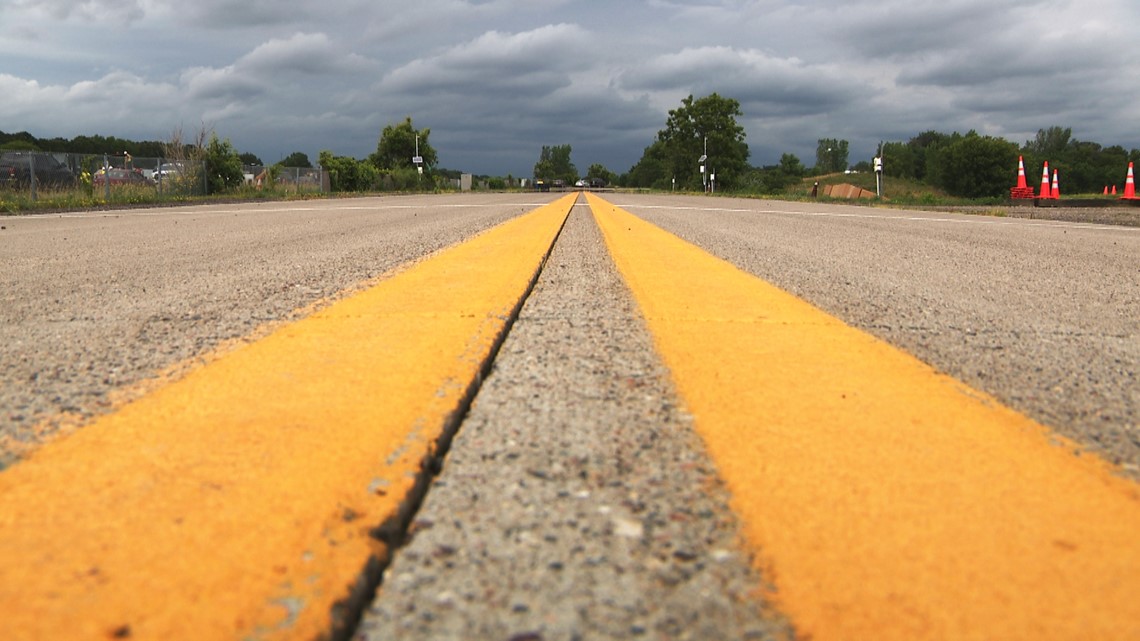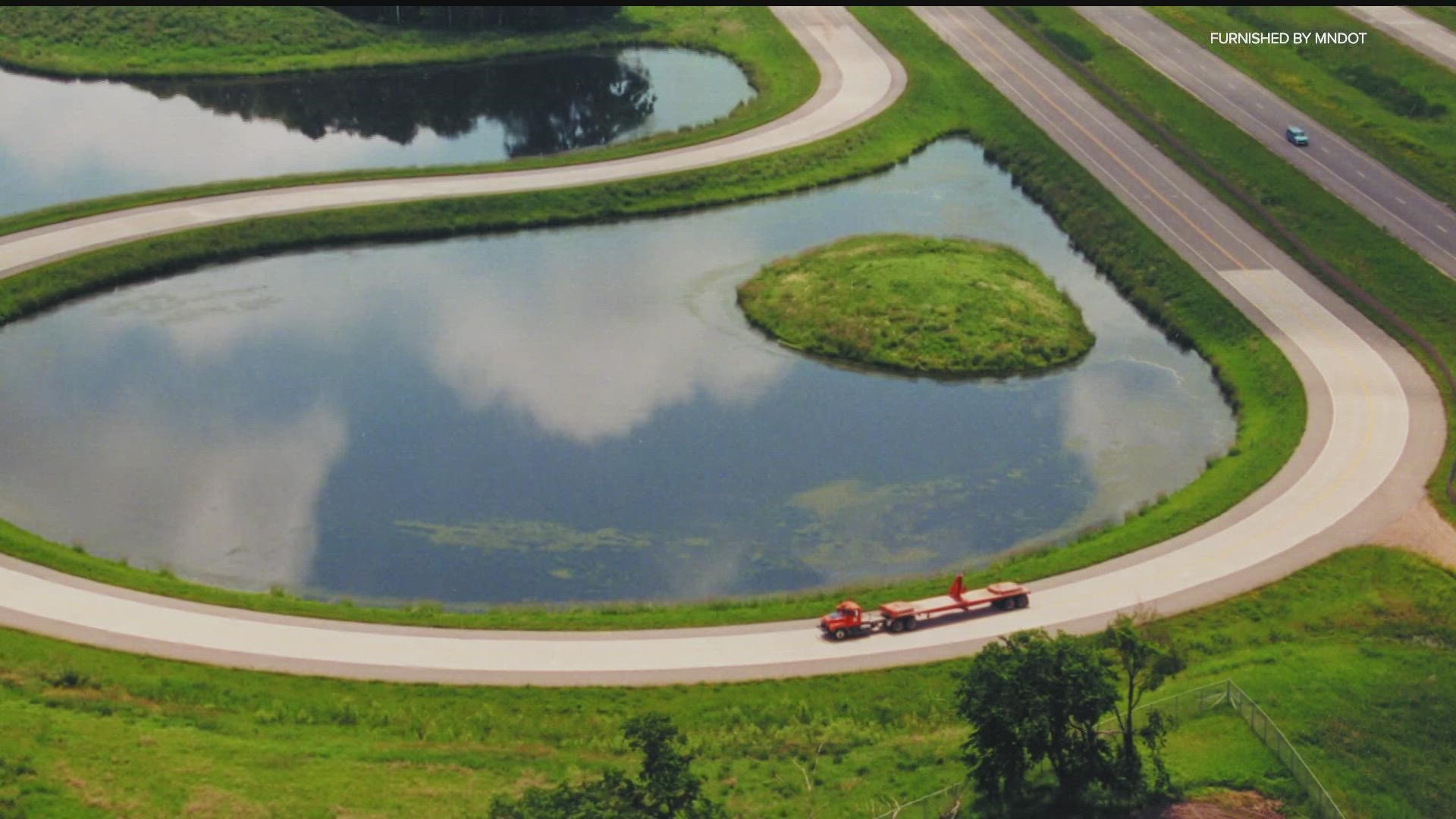MONTICELLO, Minn. — Building roads is expensive, but what if you could build a better road? A road that lasts longer and is less harmful to the environment?
You may not realize it, but that's what researchers at MnDOT have been working on for decades now. Every day thousands of drivers head north on I-94 near Monticello, unaware that every mile they drive is being studied.
"We're trying to make our roads last longer,” MnRoad coordinator Glenn Engstrom explains.
Engstrom and his fellow researchers have been working to build a better road for nearly 30 years at their state-of-the-art facility MnRoad. The facility was created to test out new ways to build and maintain roads. Research began around 1994 and since then MnDOT researchers and engineers have tested out hundreds of new ideas.
"There's really nothing like this in the world,” Engstrom says.
Saving Samples
Samples of road material and soil are stored so researchers around the world can study them and better understand what worked well in Minnesota's four-season climate, and what didn’t.
"These are some of the original samples from when MnRoad was built and opened in 1994,” Engstrom says while pointing to road samples in the facility's storage shed. "Each of them has a different mix. ”
Most of the tests don't fully work out, but Engstrom says that’s the point of these experiments. "We like failures to a certain extent, so we can see what happened, how this failed,” he shares.


Every so often the road warriors come across a game-changing idea, like creating weight restrictions during spring time when the road is still thawing out.
"We've done calculations that show we save about $14 million dollars a year in damage to roads because of those weight restrictions,” Engstrom says.
MnDOT researchers have also discovered new ways to recycle old road material, like grinding it up and mixing it in with fresh material to build new roads. In other situations crews can save the base layer of a road and build on top of it, saving thousands of tons of concrete and millions in taxpayer dollars.
Thanks to the decades of research at MnRoad, modern day highways and interstates are now cheaper, thinner, and in many cases... stronger.
"Generally our roads are thinner and they perform at least the same as our previous designs and generally better,” Engstrom says.
Track(ing) progress
Ideas and concepts are tested out on two different MnROAD tracks. One is a "low volume loop" that is meant to mimic city and county roads. To simulate the wear and tear that occurs on a typical city/county road, the research team will load up a semi with metal weights so that it weighs exactly 80,000 pounds.
“That’s the weight limit in Minnesota,” Engstrom explains.
Once the semi is loaded a full-time driver will drive that semi-truck around the low volume loop eight hours a day, five days a week. Round and round, between 60 and 70 laps a day.
The second MnRoad test track is used to simulate conditions you typically see on highways and interstates. The track is a straightaway set up on I-94 between Albertville and Monticello.


Drivers who are heading north in this area will notice that the interstate splits into two different sections. One section is mostly a conventional road like Minnesota motorists drive every day. The other stretch is split into several smaller sections that each contain a different mixture of road material.
“Each section is just slightly different based on what kinds of mixtures we’re testing,” Engstrom explains.
The MnRoad work crew installed their first batch of material experiments on I-94 back in 1994. Engstrom says the team studied those samples and then tore them out in 2008 to make room for a new batch of experiments.
Those experimental sections laid down in 2008 were recently removed as well, and now the team is working on a third batch of test samples which should be installed and ready for traffic by the end of September, 2022"We can really do a lot of neat stuff out here,” Engstrom says. “We can make roads that we would never make under ordinary circumstances. We can test things that no one else has the opportunity to test out.”
Ideas drive the future
Engstrom feels like many of the best ideas are still taking shape, like blending in different types of fiber and recycled material to make the road stronger, last longer and be more environmentally-friendly.
One company the MnROAD team is working with has the idea of mixing recycled pop bottles with more traditional road-building materials. "They say they can mix in 150,000 pop bottles in a mile that they could recycle into the product. So, that's really exciting,” Engstrom explains.
The hope is that the next big breakthrough could be in one of these 35 new sections being laid on I-94, but it will likely take 10 or 15 years to find out.


"We're just touching the surface here,” Engstrom says. “I think the future is extremely bright.
Watch more WeatherMinds:
Watch the latest deep-dives and explainers on weather and science in our YouTube playlist:

